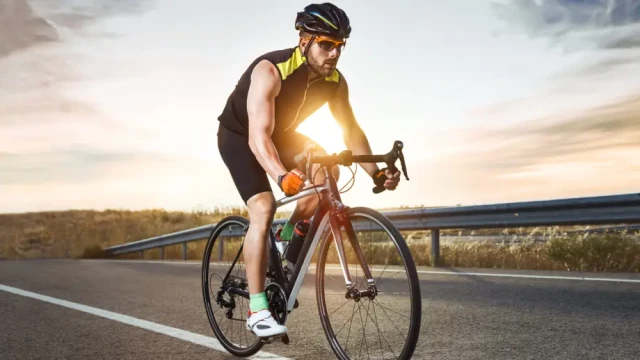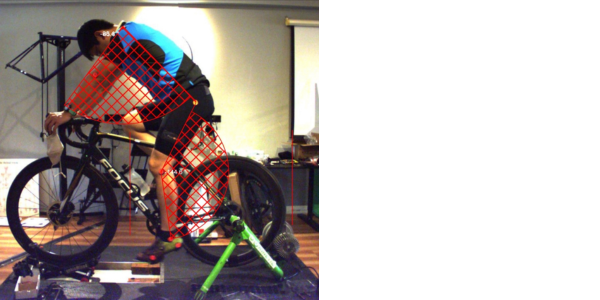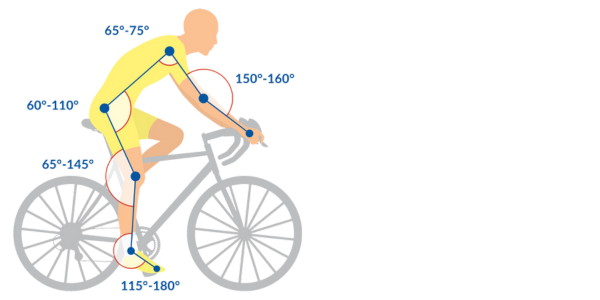
The Benefits of Proper Bike Ergonomics for Your Joints and Posture
We all have fond memories of riding our bikes as children, meeting up with friends, riding down the street with the wind in our faces, and feeling the rush of speed and freedom. But cycling isn’t just for children. Cycling is a great low-impact exercise that can help improve cardiovascular health and strengthen muscles. It is an excellent choice for individuals looking to maintain orthopedic health and overall fitness. Let's hit the road during 'Le Tour'!
Experience the Orthopedic Benefits of Cycling During 'Le Tour'!
Cycling is a versatile workout that offers a range of benefits for physical fitness and mental well-being. It is a low-impact exercise that puts less strain on the hips, knees, and feet compared to many other forms of exercise.
Boosting Physical Fitness and Mental Well-being
Riding a bike is an aerobic exercise that helps improve cardiovascular fitness, muscle strength, coordination, and mobility. In addition to physical benefits, cycling can also enhance mental health by reducing stress levels and triggering the release of endorphins. Research indicates that regular cycling may lower the risk of cardiovascular disease, and diabetes, and aid in reducing body fat levels.
Proper Bike Ergonomics for Health and Injury Prevention
Maintaining proper bike ergonomics is crucial to ensure optimal alignment of the knees, hips, spine, shoulders, and arms. Incorrect seat or handlebar positions can lead to a rounded spine and shortened hip angle, potentially resulting in injury or discomfort. By adhering to appropriate setup techniques, cyclists can enjoy numerous health benefits while minimizing the risk of orthopedic issues.
Top Safety Tips for an Efficient and Safe Ride
Whether engaging in a leisurely bike ride or participating in a high-intensity cycling class, it is essential to prioritize proper bike ergonomics to safeguard the health of your spine, hips, knees, and shoulders. Follow the guidelines below to ensure your bike is set up correctly:
- Seat Height: Stand next to the stationary bike and lift your inner leg (the one closest to the saddle) to a 90-degree angle, then adjust the saddle so that the top of it aligns with the top of your thigh. Test the seat height by sitting on the bike to ensure you have a slight bend in your knee (25 to 35 degrees) at the bottom of each pedal stroke.
- Seat Position: To adjust your bike seat, start by loosening the seat binder bolt—also known as the seat fixing bolt. Then slide the seat forward or backward to suit your needs. This tip is good for road, mountain, and hybrid bikes. Keep in mind that this is just a starting point. As you ride more, you might prefer a slightly different seat position. Next, take a look at your seat tilt. In most cases, your seat should be level with the ground. If you need to change the tilt, just loosen the seat binder bolt (or bolts) found at the top of your seat post, right under your seat, and adjust it until it's right.
- Handlebar Height: Handlebars higher than the saddle can make your ride more comfy and simple. It helps you see around better too. On mountain bikes, lift the handlebars to shift your weight when going downhill and push the front wheel into dips.

Arm-to-Torso Angle: The angle varies based on the type of bike:
- Classic Bike: Very small angle with upper arms running nearly parallel to the torso and hands resting lightly on the handlebars (not supporting body weight).
- City Bike: Approximately 60-80 degree angle (smaller angle requires less upper body support).
- Trekking Bike: An ideal 90-degree angle reduces strain on shoulder, arm, and back muscles.
- Road/Mountain Bike: Greater than 90-degree angle for a more aerodynamic position, requiring increased effort from shoulders, arms, and hands.
- Stationary Bike: A straight 90-degree angle usually helps keep you comfy and steady without putting too much stress on your shoulders, arms, and hands.

Handlebars adjusted correctly can lessen the need to bend and reach forward, resulting in less stress on your back and shoulders. Handlebars too high might cause you to lock out your elbows, which gives you poor control and balance. Handlebars too low might have you reaching for the handlebars and retracting your shoulder blades to overcompensate. Generally, the handlebar height is around the height of the seat, leaving you with a back-friendly ride.
Thank you to Kelsey Kinney, PT, DPT, Cert DN from OrthoCarolina's Matthews Physical and Hand Therapy office and Dana Cumberworth, PA-C, from OrthoCarolina's Hand Center for providing this blog information!
Resources:
- Bicycling. The Nutrition Source. Published December 1, 2022. https://nutritionsource.hsph.harvard.edu/bicycling/
- Better Health Channel. Cycling - health benefits. Vic.gov.au. Published November 30, 2013. https://www.betterhealth.vic.gov.au/health/HealthyLiving/cycling-health-benefits
- The Specialists in Bicycle Steering Systems The Guide to Cycling Ergonomics. https://hr.ubc.ca/sites/default/files/wp-content/blogs.dir/35/files/Bike-Ergonomics-reduced-size.pdf
This information is provided as an educational service and is not intended to serve as medical advice. If you are seeking specific orthopedic advice or assistance, please consult with your OrthoCarolina physician or locate one in your area through OrthoCarolina’s website at www.OrthoCarolina.com.
Back




Leave a Comment